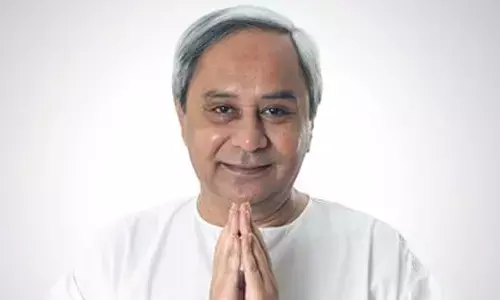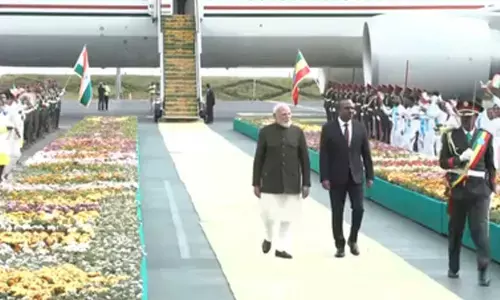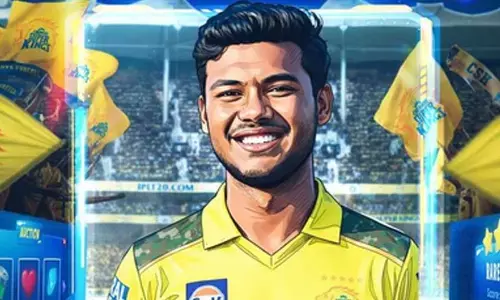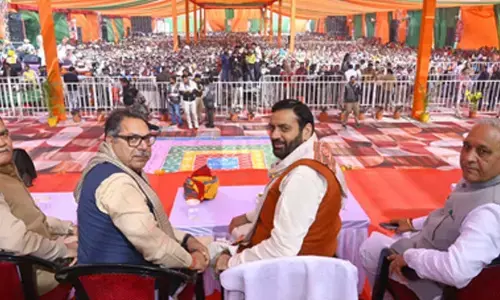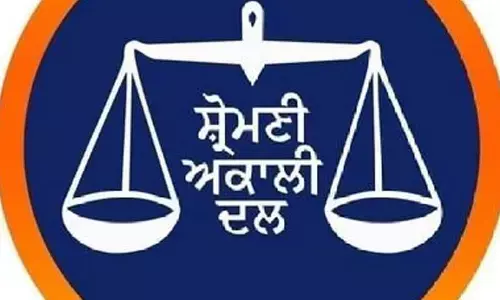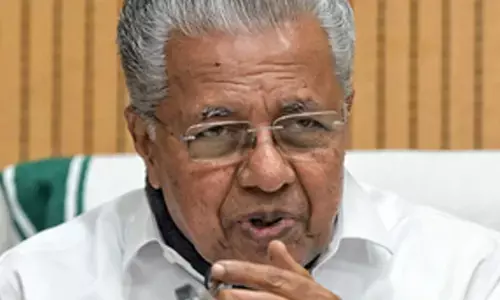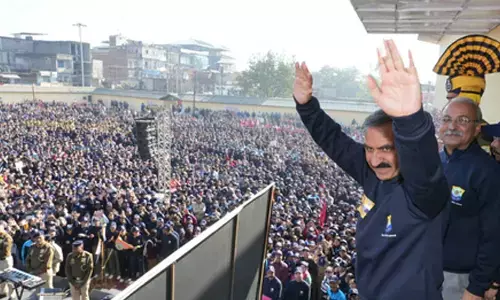Captivating performance by disciples of Guru Ananda Shankar Jayant

Srividya Sripathi and Ridhishri Yadav showcased their remarkable talent at the Kalasagaram Youth Festival of Dance, captivating the audience with their exquisite technique and expressive storytelling
Two talented disciples of Guru Ananda Shankar Jayant, imbued with excellent technique - Srividya Sripathi and Ridhishri Yadav - performed at the Kalasagaram Youth Festival of Dance on Saturday. Well-trained and with a smart and judicious selection of items from the Bharatanatyam repertoire, the duo had the audience responding enthusiastically with loud applause throughout and rising at the end to give the two young dancers a long-standing ovation.
The dancers began auspiciously with a brisk pushpanjali, a floral offering. “Ganesh Vandana” by Srividya is where the dancing Ganapati is worshipped. Her enunciation was remarkable, setting the tone of the program. In the central daru varnam that followed, the dancers seamlessly took on various roles, moving between characters and stories to bring the song and story alive. Ananda’s students have always exhibited great stage presence, clean lines, anga shuddhi, and beautiful abhinaya. So, it was with Srividya and Ridhishri.
While dancing solo or in tandem as in the duets, the dancers in their involved portrayal had the audience eating out of their hands. The lengthy jatis were handled with great ease, demonstrating the underlying amount of rigor and practice behind the scenes. The story of Meenakshi and how she met Shiva was crisply brought out in nritta and a jati that was unique and reflected the choreographic genius of Guru Ananda.
The Mother Goddess is described as lustrous, effulgent, bejeweled, furious, and fierce. In the second half of the recital, Srividya presented the rare “Dikkuteriyada” of Bharatiar. Srividya is a committed dancer. Her eyes spoke volumes, and nuances blossomed in a twinkle. She aced the piece as the audience was able to understand every mood of this Tamil song and kept pace by clapping at every change depicted by her in the story as it went through its duration.
The heroine here is wandering lost in a forest searching for Krishna in a poignant mood. Soon the heroine tired out falls asleep. In a dream, she imagines a Hunter who covets her; aghast at this impunity, she wakes up at that moment and laughs at her own insecurity when she realizes it was all a dream. Srividya was in turn searching, bewildered, despondent, and then serene in chiseled abhinaya. A Meera bhajan in Malkauns followed.
Ridhishri metaphorically spirited everyone to Rajasthan as she movingly portrayed Meera’s anguished bhakti for Krishna. “Tum Bin More” - ‘Who else will look after me but you, O Krishna?’ is the soliloquy where she pleaded with Krishna. Giridhara, who saved Draupadi’s honor in the Kaurava court after the infamous game of dice, was invoked to evocatively display the vastrapaharanam scene. Her plastic abhinaya gave delicate subtlety to her expressions as this episode unfolded. She was able to bring tears to the eyes of the audience even as they cheered the appearance of Krishna who comes to the rescue and foils the villainous intentions of her tormentors.
The grand finale was “Shivoham,” an iconic creation of Ananda that depicted Shiva and Parvati merging to become Ardhanariswara. Shiva resides in the lofty Kailasa Mountain. He along with Shakti represents the synthesis of the Masculine and Feminine energies of the Universe as Purusha and Prakriti, illustrating the inseparability of the Male and Female principles. As the artists danced together, they symbolized cosmic cycles of creation and destruction as well as the daily rhythms of birth and death. The dance was a pictorial allegory of manifestations of eternal energy - preservation, salvation, illusion, etc., presented through fervor-laden devotional poetry and mnemonics that created rolling wavelike picturizations of resounding beauty and a vision of primordial energy.
The dancers hwarmonized well while also being the perfect foil for each other in the dual roles, complementing, contrasting, and enhancing each other. The crisply vigorous nritta karanas combined with energetic synchronized dancing by the two artists brought the house down in a well-deserved round of cheering acclamation.









